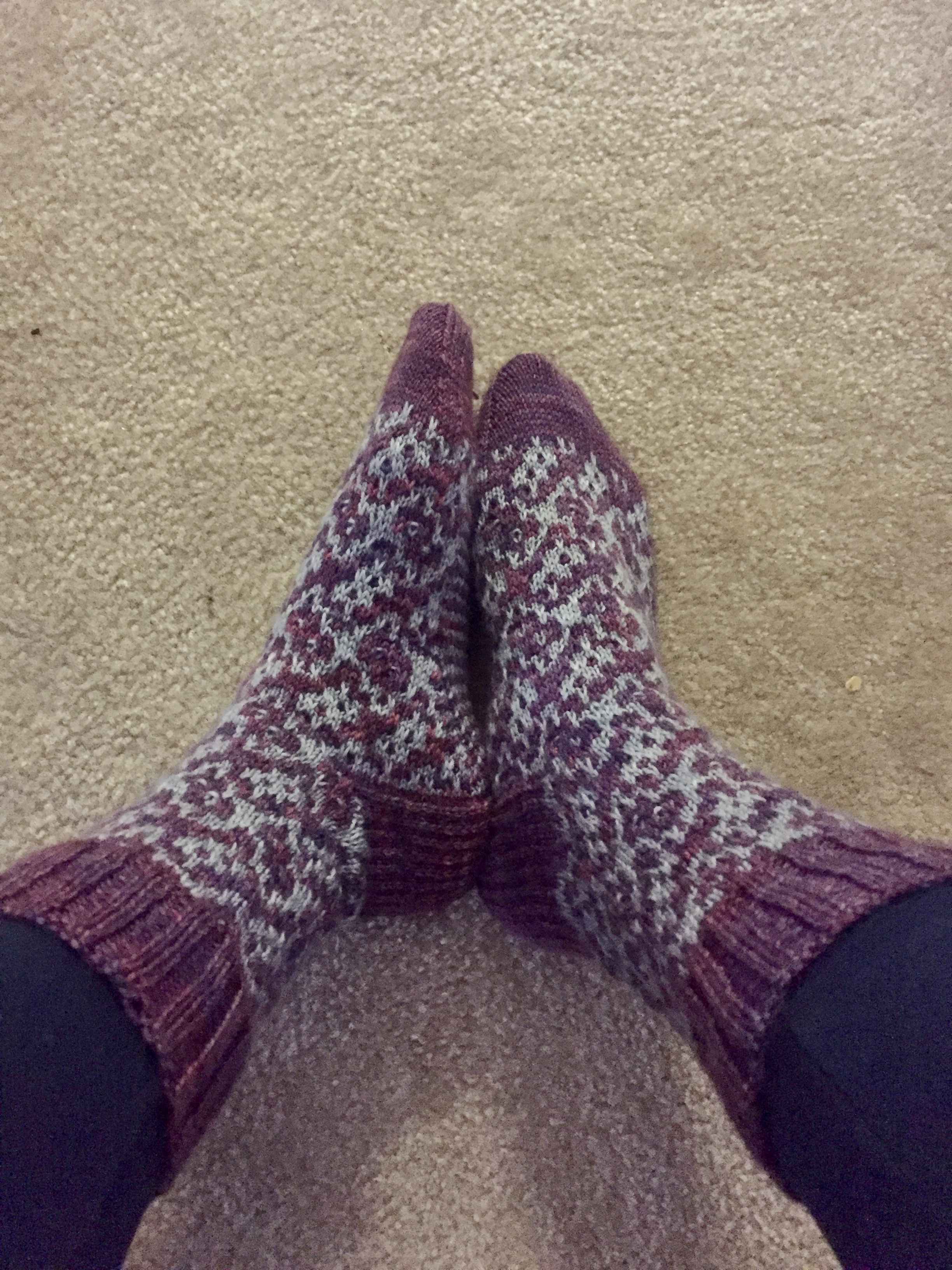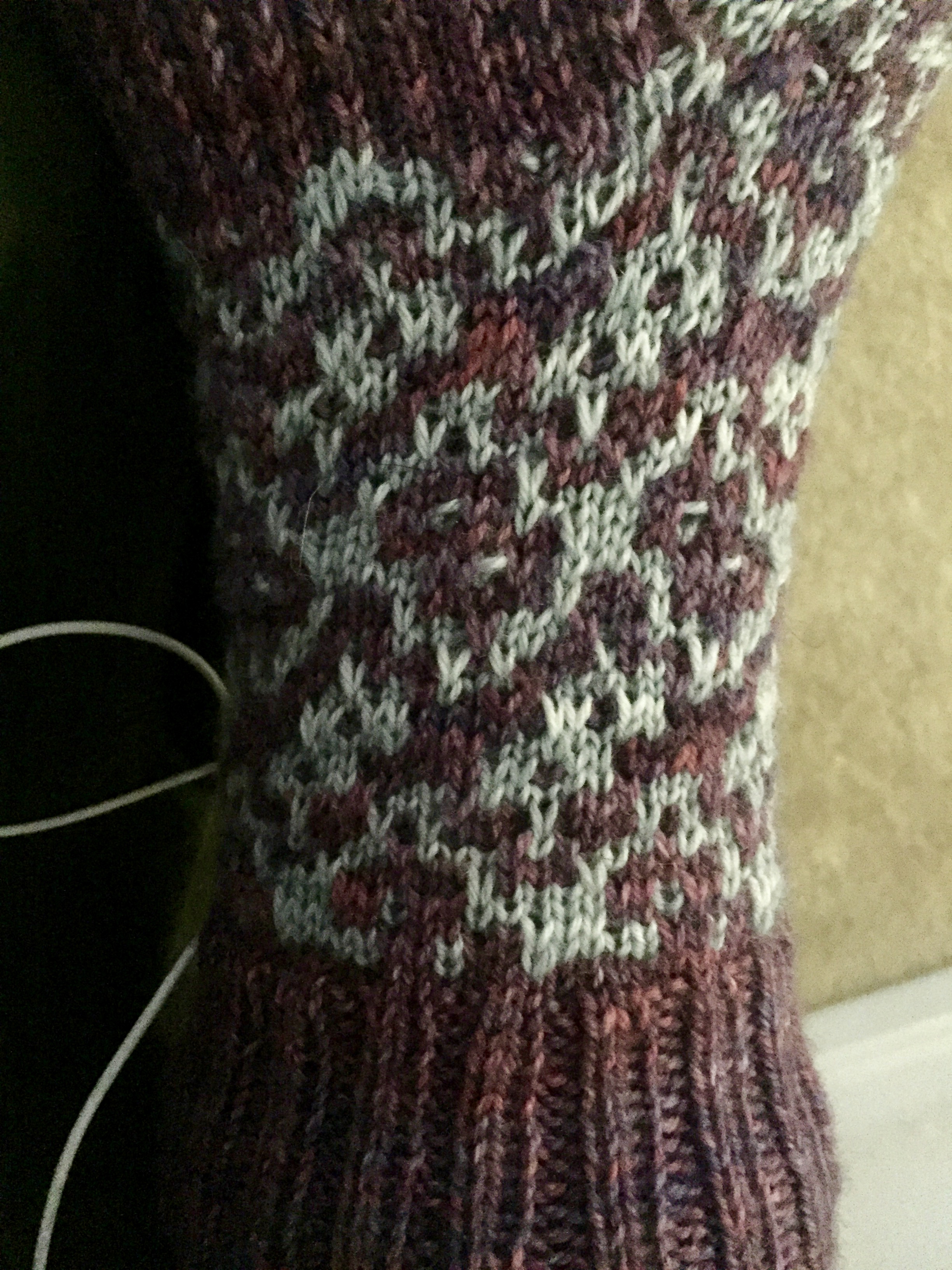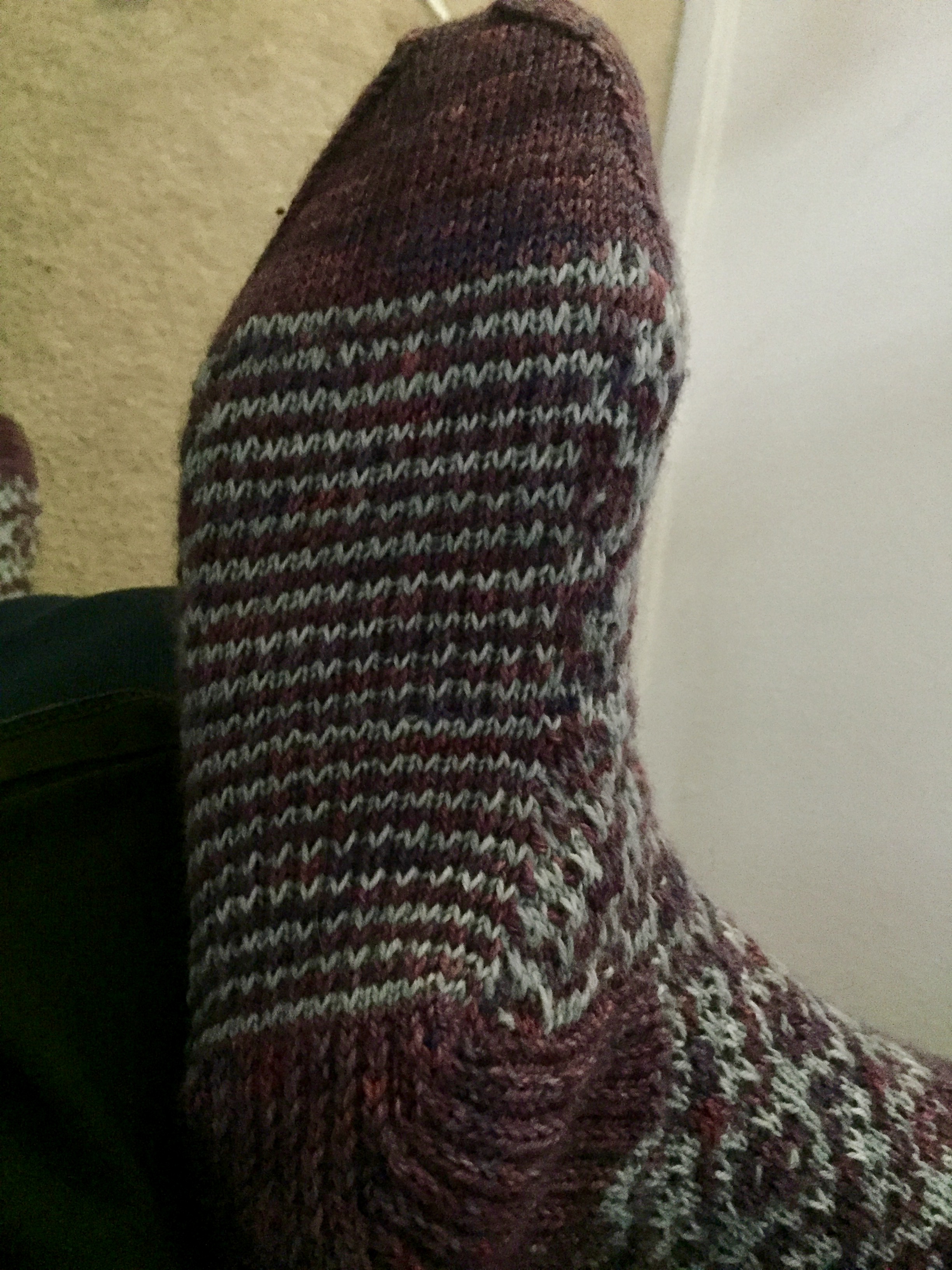There's a contra dance choreographer who, when their partner was out of town, wrote a dance each day they were gone. Sinking all their creativity into the dances themselves, the names of the dances were perhaps stinted of creativity, as they were called number 1, number 2, number 3, and so on. I feel for that choreographer, as sometimes coming up with a name just seems too hard. I didn't get any super helpful suggestions from others either, so I'm going to go with 'Mosaic 24' as a name for this pattern.
I played with the heel some more on this sock, doing the riverbed gusset on the bottom, just like in Mosaic 23 and very similar to TDS 2018: stage 5. I picked up exactly 18 stitches on either side of the heel flap, so that I could start the decreases on either side of the turned heel and have the decreases meet just as the last stitches were decreased. This is the same as I did in Mosaic 23, but for Stage 5 I picked up more stitches along the heel flap than I needed, so the decrease lines start part of the way up the heel flap. The difference between this heel and Mosaic 23's heel is that I decreased twice as quickly on these socks. I think the socks feel nicely snug around my foot, and that the (faster) decreases work just fine. I didn't have any complaints about the decreases on Mosaic 23 either though-I thought the fit of those socks seemed good as well. To be clear, with this pair I did only decrease every other row, as is typical in non-mosaic socks, but because of the nature of mosaic knitting the rows get scrunched together, making the decreases seem more frequent than they do in stage 5, for example. That's why I started with doing them every 4 rows in Mosaic 23. Both seem to work just fine, but my guess is that the slower decreases are probably better for feet with a larger circumference.
The yarns are two different cashmere sock yarns. The purple is Bugga! from the Verdant Gryphon, is 70% superwash merino, 20% cashmere, and 10% nylon, and the color is called 'clown spikes orchid'. It's actually more of a sport weight than a sock weight, but it's knitting up for nice thick, warm mosaic socks. The light blue/grey is the meadow light base from Backyard Fiberworks, 80% merino, 10% nylon, and 10% cashmere, and the color is 'rainwater'. It's a standard fingering weight.
I've determined that you can use two yarns of slightly different thicknesses for mosaic knitting, as long as your careful. I make sure that the thinner yarn is the background color, as in this sock, such that any lines that are only one stitch/row wide will most likely be in the thicker color. This isn't the first pair with mismatched thicknesses-mosaics 19 and 21 also have a thinner light color and a darker contrast color. The one place I really notice the differences in weight is actually the decreases after the heel, where with the birds-eye stitch the light rows aren't as well defined. Other than that I think I completely get away with using different weight yarns.




















































